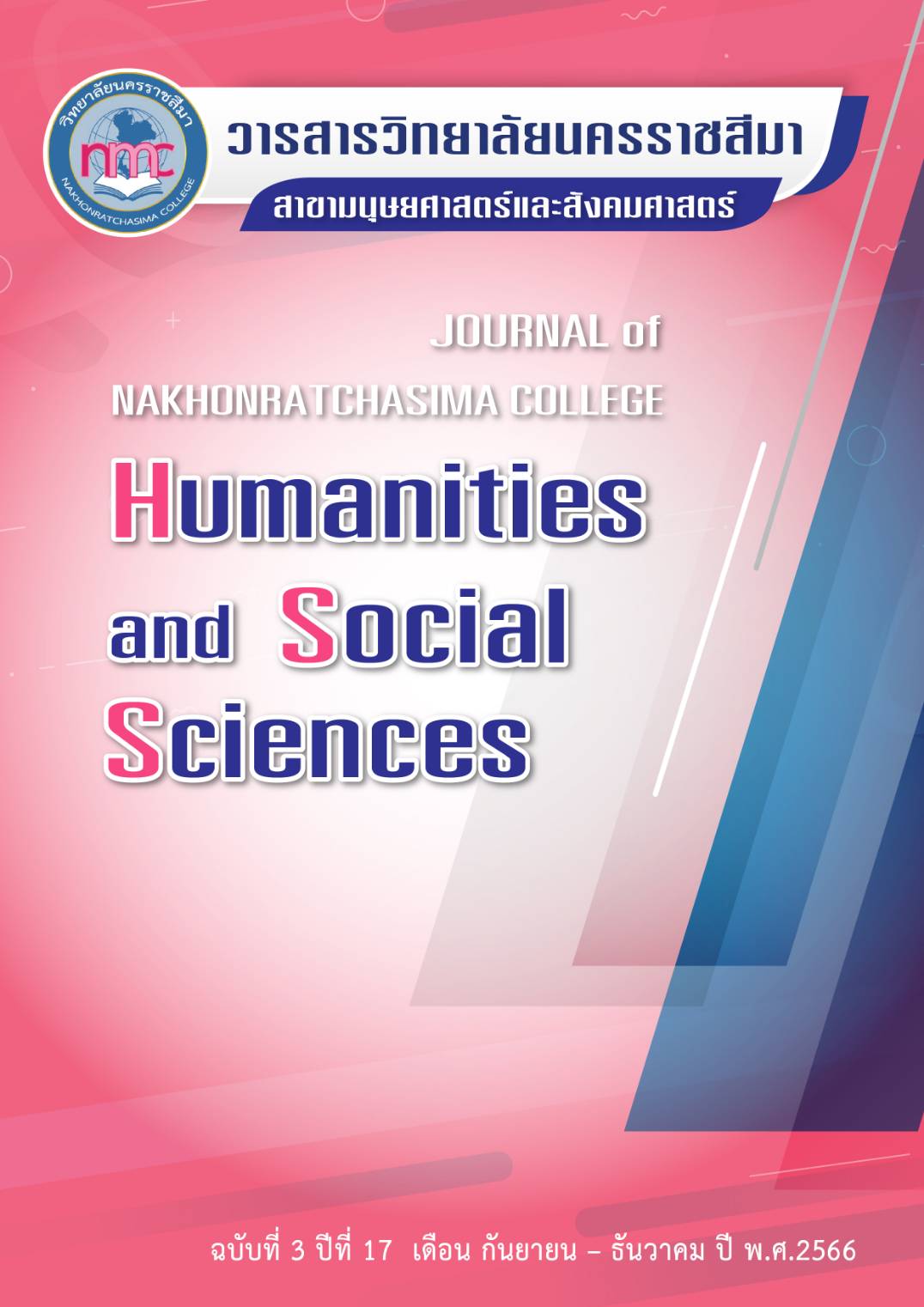The Signified of Chinese Buddhist Warrior Statues
คำสำคัญ:
Signified Chinese Buddhist Warrior Statues, Vajrapani, four Heavenly Kingsบทคัดย่อ
The purposes of this research were to study and understand the popularity of Buddhist warrior statues in the folk and the background of spontaneous engraving and shaping of folk believers and the reasons for their formation find out the meaning of the artistic signs of the Buddhist warrior statues, explain the process of the meaning of signs of summarize the signified of the Chinese Buddhist warrior statue system, qualitative research methodology was applied. The procedures of the study were presented as the following topics: Research design. This study will use the statues of Buddhist Warriors in these cave temples as the research scope 200 Buddhist warrior statues in 20 cave temples and ancient temples along the silk road in China.
The results were as follows; Chinese Buddhist warrior statues have become symbols of Chinese history, culture, art, folk customs and other important characteristics, carrying extremely rich cultural and historical information and aesthetic value. when it is used as a medium of expression, the object it replaces or refers to is the signified of protecting the Buddha Dharma, subduing demons and eliminating demons, eradicating epidemics and protecting the people and the country. This is based on Buddhist classics, folk beliefs and Chinese culture to assign meaning and value of signs created. The signifier and signified of the Chinese Buddhist warrior statue symbol will change due to the propagation in different "scenes". Buddhist warrior statues were eventually carved step by step by hand, which reflects the ancient craftsmen's own understanding. Start with a stone and end up with a complete statue.
เอกสารอ้างอิง
Dang , C. (2017). A Research of Vajra-pāni from the Perspective of Religious Studies. Journal of Tibet University, (5), 34-41
Emmerick, R. E. (2016). The Sutra of Golden Light: A Translation of the Suvarnabhasottamasutra. Motilal Banarsidass.
Hesiod (1966). Theogony. L. W. Martin (Ed.). Clarendon Press.
Liu, H. T. (2020).Wearing the head of Buddha to fight the epidemic. Cultural Heritage,(5), 80-88.
Li, X. (2018). Vajrapani the deity produced by artisan. Sculpture, (127), 90-93.
Ling, L. A. (2008). The “Sinicization” process of the images of Vajrapani in Dunhuang Grottoes durang the Northern Wei Dynasty. Chinese Culture Forum, (4), 5-12.
Morris, C. W. (2014). Writings on The General Theory of Signs (p. 420). Walter de Gruyte.
Mao, N. (2004). Longmen Grottoes' statue of Vajrapani: On the localization and secularization of Chinese Buddhist Art. New Art, (4), 43-44.
Saussure, F., &Wade, B. (1959). Coursei General Linguistics (pp. 66-67). Philosophical Library.
Robert, E. et al. (2013). The Princeton Dictionary of Buddhism. Princeton University Press.
ดาวน์โหลด
เผยแพร่แล้ว
รูปแบบการอ้างอิง
ฉบับ
ประเภทบทความ
สัญญาอนุญาต
จรรยาบรรณผู้เขียนบทความ
ผู้เขียนบทความต้องรับรองว่าบทความนี้ไม่เคยตีพิมพ์ในวารสารใดหรือสิ่งพิมพ์อื่นๆ มาก่อน ต้องไม่คัดลอกผลงานผู้อื่นมาปรับแต่งเป็นบทความของตน และไม่ได้อยู่ระหว่างการเสนอเพื่อพิจารณาตีพิมพ์ อีกทั้งยอมรับหลักเกณฑ์การพิจารณาและการตรวจแก้ไขบทความต้นฉบับโดยกองบรรณาธิการวารสารวิทยาลัยนครราชสีมา สาขามนุษยศาสตร์และสังคมศาสตร์
บทความทุกเรื่องได้รับการตรวจพิจารณาทางวิชาการโดยผู้ทรงคุณวุฒิที่มีประสบการณ์และมีความเชี่ยวชาญตรงตามสาขาของบทความ ซึ่งผู้เขียนต้องแก้ไขตามคำแนะนำของผู้ทรงคุณวุฒิภายในระยะเวลาที่กำหนด หากไม่เป็นไปตามกำหนดกองบรรณาธิการขอสงวนสิทธิ์และยกเลิกการตีพิมพ์โดยจะแจ้งให้ทราบต่อไป
ข้อความที่ปรากฏในบทความของวารสารนี้เป็นความคิดเห็นของผู้เขียนซึ่งไม่เกี่ยวข้องกับวิทยาลัยนครราชสีมาแต่อย่างใด และกองบรรณาธิการขอสงวนสิทธิ์ในการพิจารณาและตรวจประเมินบทความเพื่อตีพิมพ์ในวารสารของวิทยาลัยนครราชสีมา สาขามนุษยศาสตร์และสังคมศาสตร์



